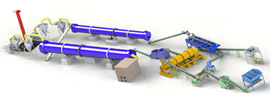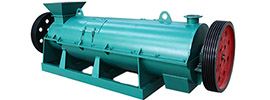I. Core Conclusions on Shelf Life
The shelf life of organic fertilizers varies significantly based on type and storage conditions:
1. Conventional Organic Fertilizer (Non-Microbial Type)
- Shelf Life: No strict expiration date; can be stored for 10+ years under proper conditions.
- Key Conditions: Requires dry, cool, and sealed environments to prevent nutrient loss (e.g., nitrogen volatilization) or moisture-induced deterioration.
- Note: Prolonged storage may lead to minor nutrient degradation, but fertility remains. Early use is recommended to avoid space occupation.
2. Microbial Organic Fertilizer (Containing Active Bacteria)
- Shelf Life: Typically 1–2 years, with some products labeled 18 months.
- Critical Factor: Active bacteria survival time is limited; expired products lose efficacy as bacterial populations decline sharply.
- Usage Advice: Use within the production year; apply promptly after opening to maximize bacterial activity.
3. Compost and Decomposed Manure
- Compost: Fully decomposed compost maintains stable fertility and can be used continuously for 2–4 years (e.g., in vineyards or vegetable gardens).
- Decomposed Manure: Recommended 3-year application cycle, with 22.5 tons per hectare for optimal soil health.
II. Key Factors Influencing Shelf Life
1. Storage Conditions
- Ideal Environment:
- Dry: Avoid moisture to prevent caking or nutrient loss.
- Cool: High temperatures accelerate nitrogen volatilization and bacterial death.
- Sealed: Prevent oxygen/moisture ingress to reduce oxidation and bacterial inactivation.
- Poor Conditions:
- Heat/Sunlight: Accelerates nutrient decomposition (e.g., nitrogen loss) and bacterial mortality.
- Humidity: Causes caking, mold, or spoilage, reducing fertility.
- Air Exposure: Microbial fertilizers lose active bacteria gradually.
2. Fertilizer Type
- Conventional Organic Fertilizer (e.g., compost, decomposed manure): Composed of stable organic matter and nutrients; no active bacteria, hence long shelf life.
- Microbial Organic Fertilizer (e.g., bio-fertilizers): Relies on active bacteria for efficacy; bacterial survival dictates shelf life.
3. Processing Methods
- High-Temperature Composting: Kills pathogens but may reduce microbial activity.
- Additives: Preservatives/stabilizers extend conventional fertilizer storage.
- Packaging: Microbial fertilizers require light-proof, oxygen-barrier packaging to sustain bacterial viability.
III. Usage Recommendations
1. Conventional Organic Fertilizer
- Store in dry, cool, sealed containers.
- Though no strict expiration, use within 2–3 years for optimal nutrient retention.
2. Microbial Organic Fertilizer
- Prioritize products from the current production year; apply immediately after opening.
- Avoid expired products, as bacterial populations decline significantly, reducing efficacy.
3. Compost and Decomposed Manure
- Use fully decomposed compost to avoid root burn or pathogen introduction.
- Replenish every 2–3 years based on crop needs and soil conditions.
4. Long-Term Storage
- Regularly inspect for caking, mold, or odors; discard compromised fertilizers.
- Store away from chemical fertilizers or alkaline substances (e.g., wood ash) to prevent chemical reactions.
IV. Special Cases and Data Support
1. Microbial Organic Fertilizer Bacterial Survival
- Research shows a 50%–70% decline in viable bacteria after 18 months of storage.
2. Compost Field Application
- Vineyards using finished compost for 3–4 years, at 100–250 tons per hectare, show improved soil structure and yield.
3. Decomposed Manure Application Cycle
- In corn cultivation, a 3-year cycle with 22.5 tons per hectare of decomposed manure increases annual yield by 10%.
V. Summary
Organic fertilizer shelf life depends on type and storage:
- Conventional Organic Fertilizer: Stable under proper storage (>10 years), but use within 2–3 years for best results.
- Microbial Organic Fertilizer: Strict 1–2 year shelf life; discard expired products.
- Compost/Decomposed Manure: Stable post-decomposition; use continuously for 2–4 years, replenishing every 3 years.
Final Advice: Choose storage methods based on fertilizer type, prioritize microbial products for timely use, and monitor soil conditions for replenishment.
 Send us a Email
Send us a Email Wulong Industrial Cluster
Wulong Industrial Cluster Have any question?
Have any question?



















